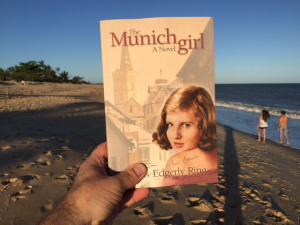Phyllis Edgerly Ring's Blog, page 19
February 1, 2016
Books, birthdays and butterflies

Enter by Feb. 6 to win.
As my novel, The Munich Girl, reaches more readers, I’m continually moved and surprised by the level of response that the book is bringing.
It’s a privilege to receive readers’ impressions about themes that weave through the story.
Gayle Hoover notes, “It’s the women in this story who have the real strength, even in instances when they easily could have been seen as only victims.”
At the heart of it all, the story’s goal is to encourage discussion at levels that will take another look at many things, including our very own selves.

Albert Marquet, Jardin du Luxembourg, 1898. Oil on canvas, Sotheby’s Images, London
Those who’ve made the way through the novel know that many objects and events in it invite the way toward looking at things anew. One image in particular that does this is a butterfly.
February is the month when the two friends in this story each have a birthday, each born in a Leap Year like this one.
To celebrate, I’m having a drawing at the beginning and end of the month. On February 6, which was also Eva Braun’s birthday, I’ll draw the name of two winners for a signed copy of the book and a silver butterfly bracelet designed by artist Diane Kirkup.
To enter, send an email to info@phyllisring.com with “Butterfly” in the subject line. Those who include any thoughts about the book or a photo of themselves with it will receive 3 entries.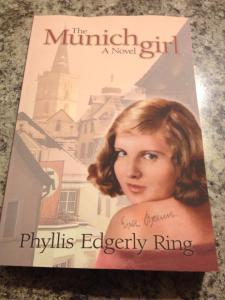
And my deepest thanks to each and every one who is connecting with The Munich Girl.
It is readers, and only readers, who give a book its truest life.
Find more about The Munich Girl: A Novel of the Legacies that Outlast War here:


January 30, 2016
Books, birthdays and butterflies

Enter by Feb. 6 to win.
As my novel, The Munich Girl, reaches more readers, I’m continually moved and surprised by the level of response that the book is bringing.
It’s a privilege to receive readers’ impressions about themes that weave through the story.
Gayle Hoover notes, “It’s the women in this story who have the real strength, even in instances when they easily could have been seen as only victims.”
At the heart of it all, the story’s goal is to encourage discussion at levels that will take another look at many things, including our very own selves.

Albert Marquet, Jardin du Luxembourg, 1898. Oil on canvas, Sotheby’s Images, London
Those who’ve made the way through the novel know that many objects and events in it invite the way toward looking at things anew. One image in particular that does this is a butterfly.
February is the month when the two friends in this story each have a birthday, each born in a Leap Year like this one.
To celebrate, I’m having a drawing at the beginning and end of the month. On February 6, which was also Eva Braun’s birthday, I’ll draw the name of two winners for a signed copy of the book and a silver butterfly bracelet designed by artist Diane Kirkup.
To enter, send an email to info@phyllisring.com with “Butterfly” in the subject line. Those who include any thoughts about the book or a photo of themselves with it will receive 3 entries.
And my deepest thanks to each and every one who is connecting with The Munich Girl.
It is readers, and only readers, who give a book its truest life.
Find more about The Munich Girl: A Novel of the Legacies that Outlast War here:


January 29, 2016
The writing path of The Munich Girl
I am honored to be an interview guest this week at New Hampshire writer Lisa Haselton’s Reviews and Interviews Blog.
 What inspired you to write this book?
What inspired you to write this book?
German families were among my very first friends and Germany made a deep impression on my heart when my family lived there in the 1960s. I wanted to understand more about Germany’s experience during the war.
Shortly after I decided this, I received a copy of British/German writer Angela Lambert’s biography of Eva Braun. Then a combination of still somewhat baffling circumstances led to my owning the portrait of Eva that features in the story. You never know where a decision will lead. At the time, I was simply looking to learn and understand, not necessarily write a book. I certainly never imagined that the pathway of my discoveries about Germany would follow the life of Hitler’s companion.
What exciting story are you working on next?
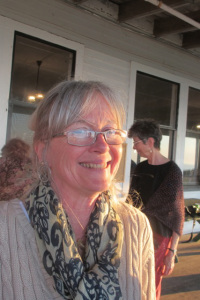 My next book is likely to be a memoir-style reflection about where this novel has led me. Nothing about it is what I would ever have imagined or predicted on my writing path, and there are experiences I’ve had in the course of this book’s coming together that I’m probably never going to be able to understand, let alone explain.
My next book is likely to be a memoir-style reflection about where this novel has led me. Nothing about it is what I would ever have imagined or predicted on my writing path, and there are experiences I’ve had in the course of this book’s coming together that I’m probably never going to be able to understand, let alone explain.
One of the most personally stunning …
Read the rest at: http://lisahaseltonsreviewsandinterviews.blogspot.com/2016/01/interview-with-historical-fiction_29.html 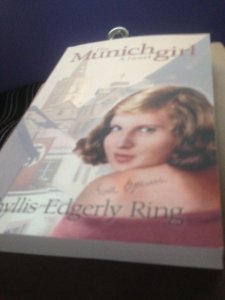
Find more about The Munich Girl: A Novel of the Legacies that Outlast War at:


January 25, 2016
A Lover of Books hosts The Munich Girl
Grateful to Sonya Alford for including my Guest Post at her A Lover of Books Blog this week:
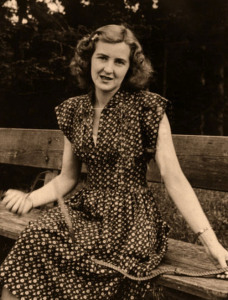 Not even in extra-large versions of my wildest dreams did I imagine I would write a novel in which Hitler’s wife is a character.
Not even in extra-large versions of my wildest dreams did I imagine I would write a novel in which Hitler’s wife is a character.
The Munich Girl is about many things, including a secret friendship between two women, one of whom was the megalomaniac’s mistress — later wife — Eva Braun.
Anna, my novel’s protagonist, grew up eating most family meals under her father’s war-trophy portrait of Braun.
This baffling situation has never been explained, other than that the portrait is a sort of emblem for her father of the Allies’ triumph over the evils of the Third Reich. 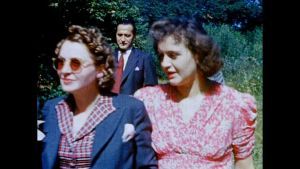
Everything in Anna’s life is turned upside-down when she discovers that her mother had a secret friendship with Hitler’s mistress, and that the portrait is a key to unwrapping all of the other secrets this enfolds.
Read the rest at: https://aloverofbooks.wordpress.com/2016/01/24/guest-post-by-phyllis-edgerly-ring/
Find more about The Munich Girl: A Novel of The Legacies That Outlast War at:


January 22, 2016
Love’s call to creative living

Photo: Wertheim.de
GLEANINGS FOUND HERE AND THERE:
Some more wonderful company, as I ponder the mysteries of inspiration and creative process while reading Elizabeth Gilbert’s new book Big Magic: Creative Living Beyond Fear:

Photo: Wertheim.de
“I think being motivated is naturally built-in to one’s vocation. When you walk a path you love, there is something deeper calling you forward on it, like a beautiful question that can never be answered. In the hard times you may turn away from it, but a part of you knows you’ll always turn back because you can’t give up on what you love, even if you try.
In the end, I think the real work is not finding inspiration, but attuning to it. So when I’m not feeling inspired, I know somewhere along the line I’ve been distancing myself from life.
This feeling of being separate from ‘something greater’ is usually brought about by numbing habits; so I’ll take myself to the forest and let my senses be reawoken and warmed back to life. I think pleasure is really the gateway to feeling connected and inspired.”
~ Dreamwork with Toko-pa

Photo: Wertheim.de
Such love does the sky now pour,
that whenever I stand
in a field,
I have to wring out the light
when I get home.
~ St. Francis of Assisi
It is through the power of the soul that the mind comprehendeth, imagineth and exerteth its influence, whilst the soul is a power that is free.
The mind comprehendeth the abstract by the aid of the concrete, but the soul hath limitless manifestations of its own.
~ ‘Abdu’l-Bahá


January 19, 2016
“Uncomplicated read of a complex situation”

A room where Eva Braun likely did a lot of her own reading. Photo courtesy of Third Reich in Ruins.
I believe it’s writers’ biggest privilege to have others read their work. After all, our world has more books in it than ever before.
When book reviewers (who are, most often, inundated with authors’ requests for reviews) make the time to read, reflect on, and write a review for a book, it’s nothing short of supreme generosity.
As The Munich Girl makes its way out into a world of readers, it’s a gift each time a reviewer shares response to the novel. This week, writer Carol Sampson has offered her thoughts about it at her blog, and also introduced a new circle of her own readers to the book.

Writer and reviewer Carol Sampson
Back in November when the book’s print version published, Carol was the very first person to respond when, hunched over my laptop in my good friend’s guest room in Germany, I searched for book bloggers who might be interested in giving the book that increasingly rare resource: their time. I was especially grateful to connect with Carol, who, like my mother, is from the UK.
It’s an extra bonus when a reviewer recognizes both the themes and the intent that The Munich Girl is meant to convey. Carol notes that the novel reflects my own interest “in people, their relationships, and the effects we all have on one another in the decisions we make. Each character reveals different aspects of humanity and gives an insight into the human condition.”
 Describing the story as a weaving of history and fiction that’s “an uncomplicated read of a complex situation,” she kindly credits it with “offering an understanding of the intricacies of relationships.”
Describing the story as a weaving of history and fiction that’s “an uncomplicated read of a complex situation,” she kindly credits it with “offering an understanding of the intricacies of relationships.”
With my deepest thanks to Carol, I encourage you to read her full review at the link below and, while you’re there, check out the other great recent post she’s done called “Who am I to judge?”
Link to Carol Sampson’s review here:
http://carolsampson.co.uk/blog/the-munich-girl-a-novel-of-the-legacies-that-outlast-war/


January 16, 2016
There is no such thing as small change
 Around this time of year, I’m reminded of a story that showed me what a myth it is that people can’t change, that generations of behaving a certain way will only lead to more of the same.
Around this time of year, I’m reminded of a story that showed me what a myth it is that people can’t change, that generations of behaving a certain way will only lead to more of the same.
A couple that we know made enormous efforts over the years to help their neighborhood be a better place for kids. Once a thriving, middle-class community to which the husband’s grandparents immigrated, it had fallen into decay with their city’s economic depression. Little by little, the couple’s home — that house his grandparents bought long ago — became a safe haven for the neighborhood’s kids, many of whom had little or nonexistent home life, or parents who just didn’t know how to get up from taking too many hits when they were already down.
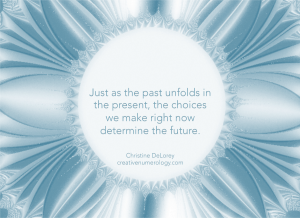 As our friends and their own three children watched their home evolve into a de facto Boys and Girls Club, they decided to be intentional about it. They bought the house next door (an affordable prospect in a neighborhood where few choose to live) and invested in putting a pool in their backyard. Over the next decade of summers, a lot of kids gathered around that pool. The warm welcome they received there included rules, limits and a chance to develop self-discipline that most would find nowhere else, It was a chance to develop what Dr. King once called “the content of their character” — and to understand that this is the real purpose in life. Dozens of kids who passed through that house, and many of their parents, found possibilities in life they might never have known existed.
As our friends and their own three children watched their home evolve into a de facto Boys and Girls Club, they decided to be intentional about it. They bought the house next door (an affordable prospect in a neighborhood where few choose to live) and invested in putting a pool in their backyard. Over the next decade of summers, a lot of kids gathered around that pool. The warm welcome they received there included rules, limits and a chance to develop self-discipline that most would find nowhere else, It was a chance to develop what Dr. King once called “the content of their character” — and to understand that this is the real purpose in life. Dozens of kids who passed through that house, and many of their parents, found possibilities in life they might never have known existed.
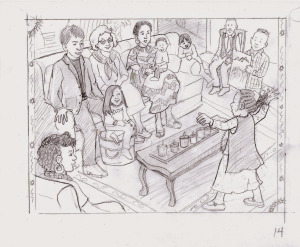
Illustration by Leona Hosack
I thought I knew this couple’s story until, while I was visiting with them, the husband nodded toward a city bus stop as we drove past and said, “That’s where it all began. As they shared the story of their courtship and decision to marry shortly after high school, he described how, as they were standing at that bus stop one day, star-stuck with love and making big plans for their future together, he’d said something offhandedly. A car of men with faces as dark as most of their neighbors today had driven by, and without even thinking, he’d uttered a racial slur. It was something he’d heard fairly frequently among his peers.
“I’ll never forget the look on her face.” His own expression was somber in memory. “That look in her eyes, it was a combination of disbelief and anger, disappointment and sadness.”
That look, he said, had made the biggest impact on him of all, unleashing changes he could never have predicted.
His wife explained that she’d grown up with her family’s foster son, whom she truly loved like a brother, and who was black. The circle of her family’s African-American friends was also wide. Hearing her future husband say something like this seemed unthinkable, and unacceptable. As she turned to him with that look that day, she told him, “I don’t think I can be with you.” 
At the time, her husband notes, any remorse on his part was motivated strictly by the desire not to lose her. “But I also didn’t want to lose the love and trust and respect for me that I saw leave her eyes when I’d said that,” he says. “And I knew that I wanted the mother of my children to be someone who had the strength of conviction that she had. It was brave to take a stand like that, because she really loved me, and what I did must have been a big disappointment to her.”
Like the efforts they later made to help their neighborhood’s children, nothing came easily, or overnight. But he did have a kind of epiphany that day, he says. “I realized that I had more choice about what I could do, and think, and believe, than I had understood. A lot of my actions and beliefs came out of the way my family and those who I’d grown up with saw things, and it was my responsibility to recognize where I’d been influenced by that, and to decide for myself.”
Standing at the bus stop that day, he couldn’t have imagined where such a willingness to change would lead him. Not only did that house of his grandparents eventually become an interracial community center, but his own circle of friends and family looks so much different than it might have had he chosen a different path that day at the bus stop.
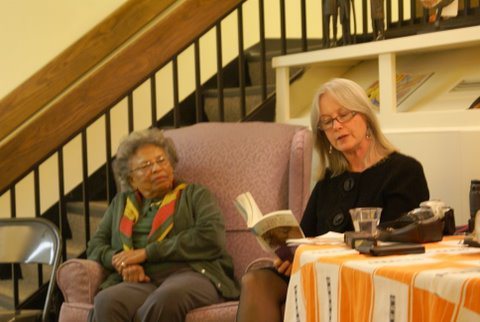
The kind of change that moves away from blind imitation of the past is nearly always an act of real moral courage, however small it may appear at first. The smallest action or decision to change based on principle or new understanding can often be overlooked by others, seemingly invisible at the time. But as my friends — and their many friends — can testify, it initiates a quietly powerful momentum that, like the lever of Archimedes, sometimes can move the world.
 Adapted from Life at First Sight: Finding the Divine in the Details:
Adapted from Life at First Sight: Finding the Divine in the Details:


January 13, 2016
Dancing with what is “impossible-to-predict”
Hot New Releases in Cultural Heritage Fiction
1.

The Munich Girl: A Novel of the Legac…
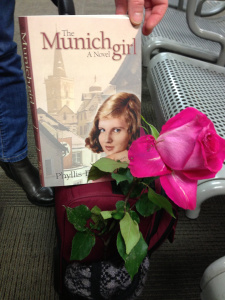
The celebratory rose I still can’t figure out how my husband acquired on our way to catch our train.
Last weekend, a confluence of generous circumstances I could never have imagined (nor engineered) led to The Munich Girl’s landing on several Top 100 lists at Amazon, staying #1 on one of them for several days.
Almost exactly a year ago, I began a discussion with Marina Dutzmann Kirsch, the talented designer who would eventually create the novel’s cover and interior, plus be a remarkable doula in its publication process.
I thought I was mostly thinking aloud, that day. If I’d known Marina better then, I’d have known what was coming next — that her response was about to unleash the pace of the final stages of my book’s publishing experience. The best way I’ve found to characterize the very rush of it toward its end is like a delivery’s intensity after the extended, persevering period required of a mother in labor.
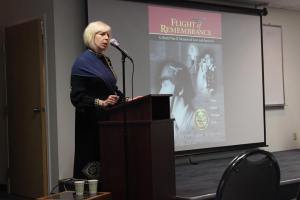
Marina in a presentation about her own wonderful book, Flight of Remembrance.
Marina has an energy I couldn’t even have estimated, let alone fathom. Within hours she had created a cover and interior design that felt like something I’d already known, seen, held in my hands. It was as uncanny as so many revelations in the process of this book have been.
The immediacy and intensity of her response was a prod that seemed to bring the book’s finish line up to my very nose as I watched. There were still segments that remained unwritten at that point, although I use that term differently now than I used to. Today I might say that they just weren’t yet captured on pages. My entire experience of “writing” this book has been like finding – hearing, seeing, feeling – the words of its story like a sometimes hyper-vigilant scribe.
 Author Elizabeth Gilbert, an enduring favorite in my world for so many reasons, has again shared remarkable insight about creative process in her new book, Big Magic: Creative Living Beyond Fear. I remember once thinking that I ought to write a book on something like that topic myself but I think that idea went and found a phenomenally better-equipped partner.
Author Elizabeth Gilbert, an enduring favorite in my world for so many reasons, has again shared remarkable insight about creative process in her new book, Big Magic: Creative Living Beyond Fear. I remember once thinking that I ought to write a book on something like that topic myself but I think that idea went and found a phenomenally better-equipped partner.
That is the essence of what she shares: that ideas and inspiration, like denizens of a kingdom all their own, search for human collaborators to bring them into reality. We have the choice of whether to say no or yes.
“If you do say yes to an idea,” she notes, “now it’s showtime. Now your job becomes both simple and difficult. You have officially entered into a contract with inspiration, and you must try to see it through, all the way to its impossible-to-predict outcome.”
Within my own experience of that over these last years, I’ve discovered that going that distance will also require not doing, and not giving attention to, quite a number of things. It will mean, as Liz Gilbert’s subtitle suggests, moving beyond fear, after meeting and facing it, of course.
The paradox is that the fear comes from the part of myself that is incapable (if unassisted) of going the distance, but resists accepting, surrendering to, that truth. I honestly believe that once a lot of the absolutely junk conditioning of our world — the kind that tries to demean the validity and value of intuition and emotion for the sake of keeping things off-balance for worldly gain — is ceremoniously unseated, we’ll experience a lot less of that particular kind of fear.

Photo: Suzanne Birdsall-Stone
What the pathway of creative process has repeatedly extended over these last seven years of my life is the chance to nearly step around that fear, at times, and around that conditioning that’s always insisting that things must be done a certain way, so that certain others may be pleased. Saying yes to ideas and inspiration that call to us inevitably means saying no to those kinds of demands.
Full-on “yes” to creative process can feel a bit like jumping off a cliff at first, in its mere unfamiliarity.
But once that part’s behind us, it becomes the delightful flow of an invitation that seems to say, “Just come along and pay attention, and keep focus. And even (gasp!) enjoy this, why don’t you? Wait till you see the fun surprises on their way.”
Find more about The Munich Girl here:
http://www.amazon.com/Munich-Girl-Novel-Legacies-Outlast-ebook/dp/B01AC4FHI8/ref=tmm_kin_swatch_0?_encoding=UTF8&qid=1452626160&sr=1-1


January 10, 2016
The Munich Girl in the Philly Inquirer
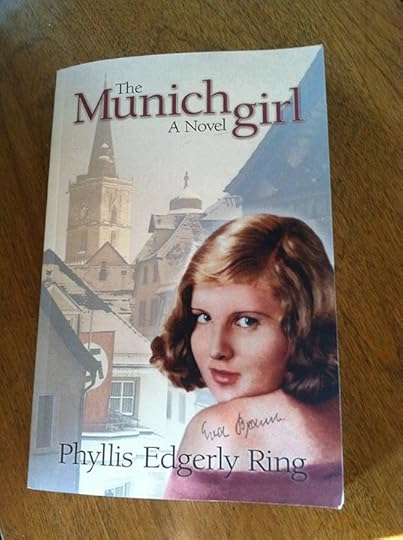
Review published January 10, 2015 in The Philadelphia Inquirer.
My very deepest thanks to Blogger Leslie Handler of Leslie Goes Boom. You found The Munich Girl a fine Philly home, in a big Sunday paper, right as the novel’s Kindle version went live. You’re like a fairy godmother, and I’m a lucky, lucky writerella.
Readers, follow Leslie’s blog for fun posts.
Find it, and her review of The Munich Girl here: Review: The Munich Girl


January 7, 2016
We are happening to life

“Take Counsel Together” – artist, Judy Wright
GLEANINGS FOUND HERE AND THERE:
Trust yourself. Create the kind of self that you will be happy to live with all your life. Make the most of yourself by fanning the tiny, inner sparks of possibility into flames of achievement.
~ Golda Meir
Sometimes we forget that we must bring presence to the as yet unmanifest dream which wants to come alive around us. By presence I don’t just mean attention, but a certain quality of attentiveness which holds the anticipation of being met. It doesn’t require the world to act first, to prove itself, or miraculously appear. Instead it behaves as if the thing one is becoming is guaranteed and moves as if it carries that secret in its step. Life isn’t only happening to us, we are happening to life.
~ Excerpted from the upcoming book, Belonging, by Toko-pa Turner

Artist: Judy Wright
Ours is not the task of fixing the entire world all at once, but of stretching out to mend the part of the world that is within our reach. Any small, calm thing that one soul can do to help another soul, to assist some portion of this poor suffering world, will help immensely. It is not given to us to know which acts or by whom, will cause the critical mass to tip toward an enduring good.
~ Clarissa Pinkola Estes
I like the idea of dreaming the big dream and making small steps. I’d like to think that you reach your hand, just a little bit further than your reach, not enough so that you’ll be frustrated, not enough so that you’ll give up, but just enough so that you’ll stretch yourself.
~ Maya Angelou



